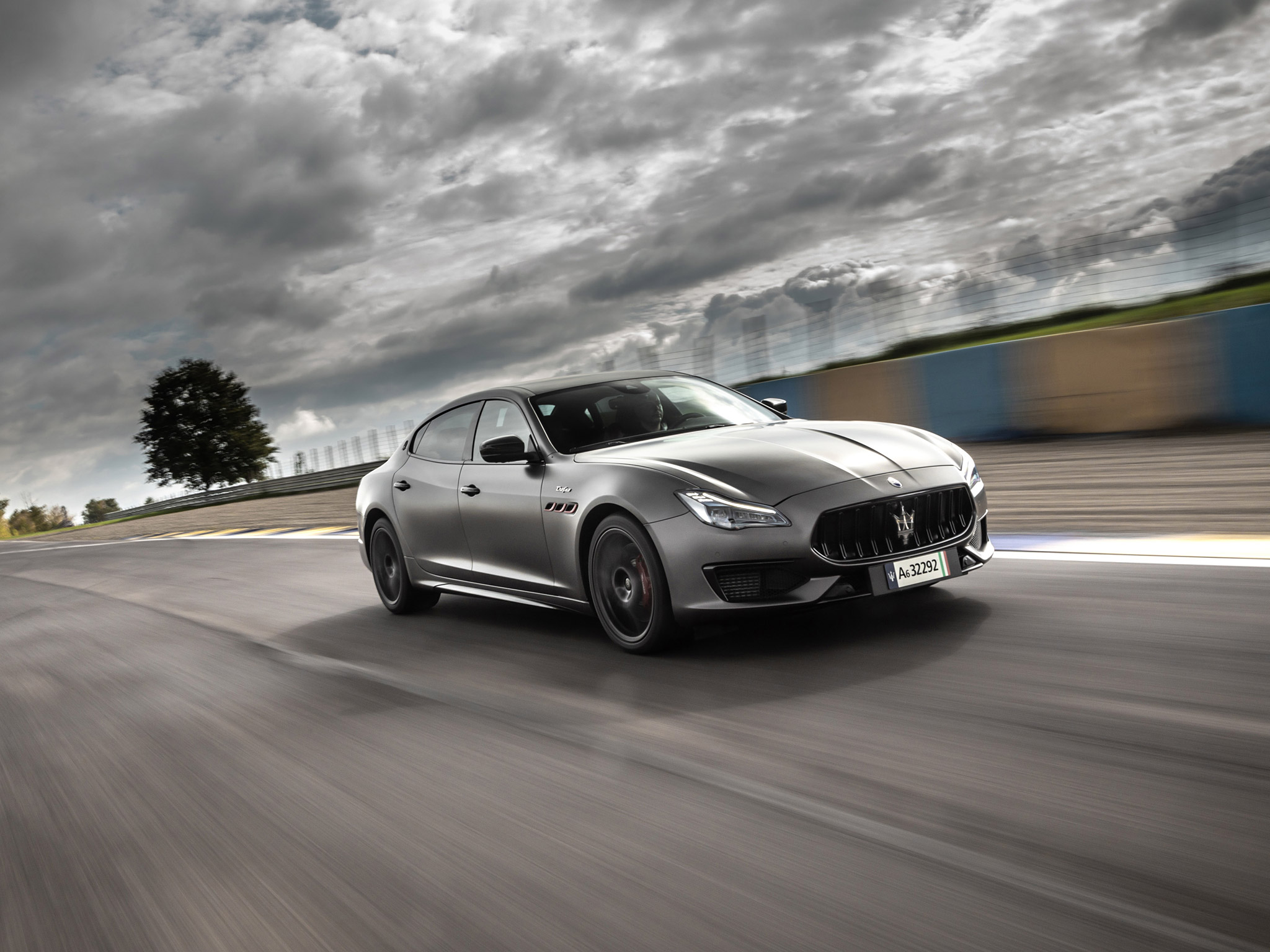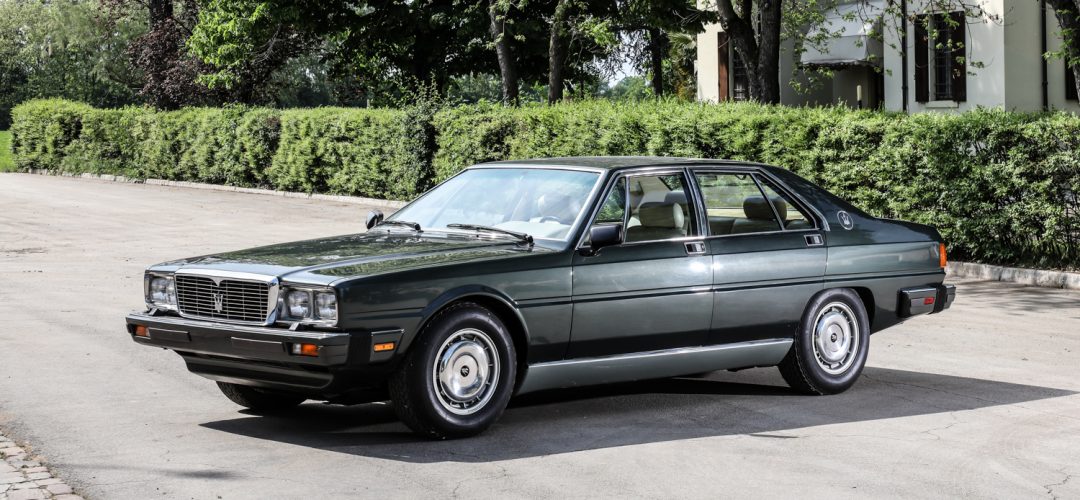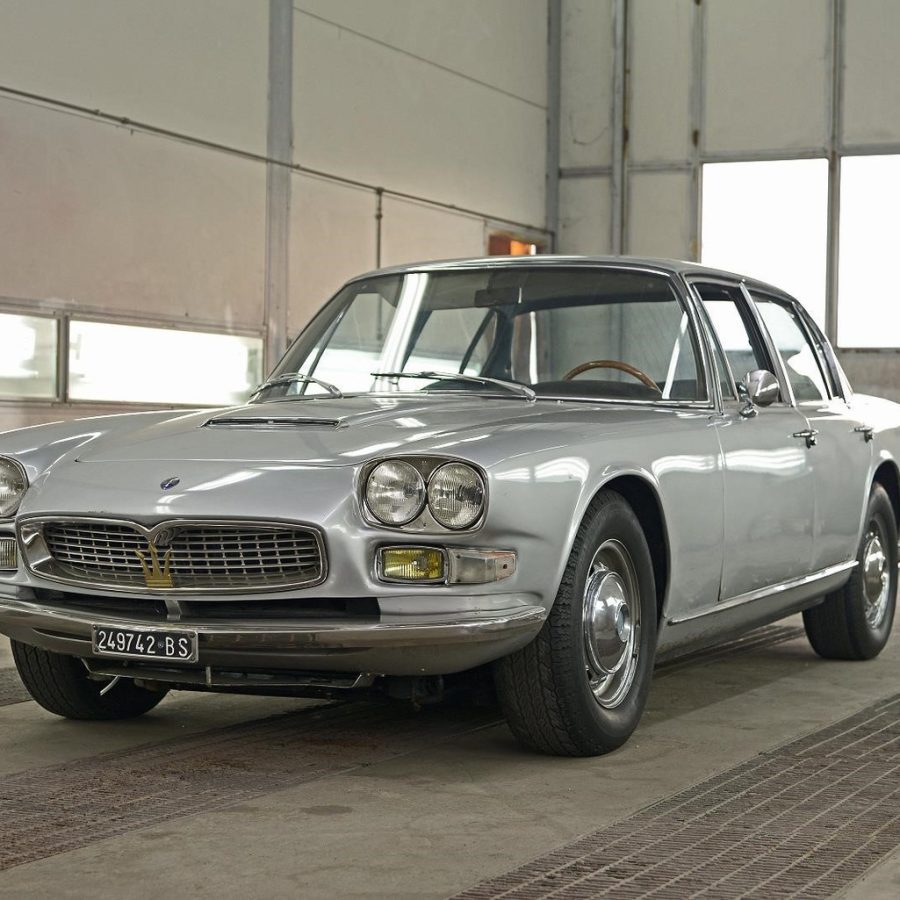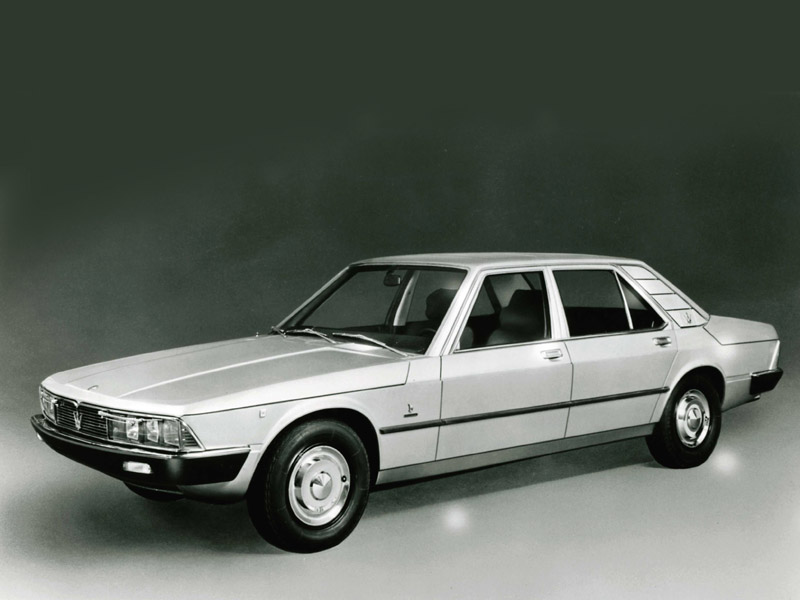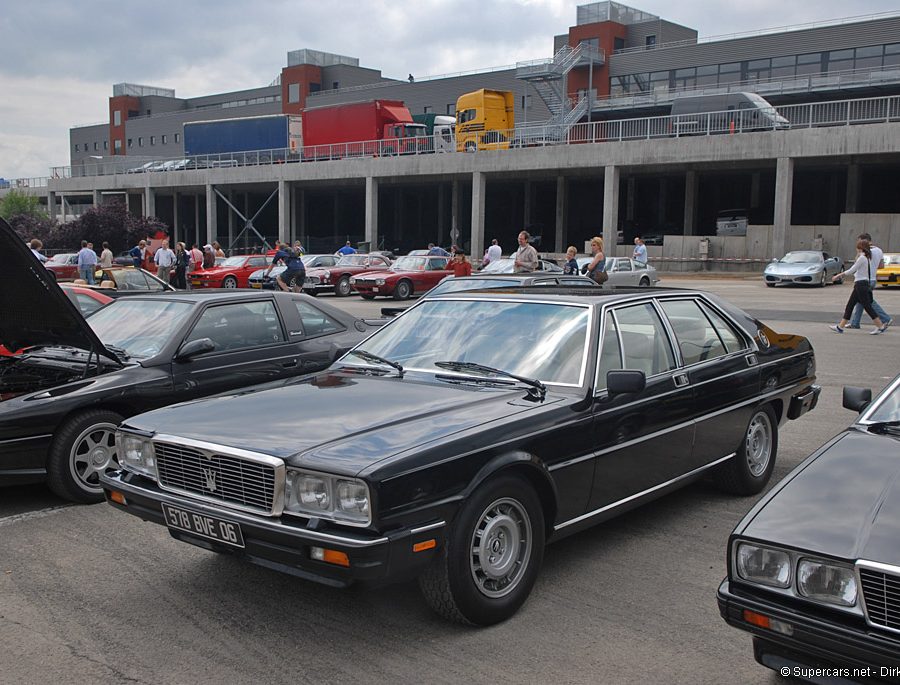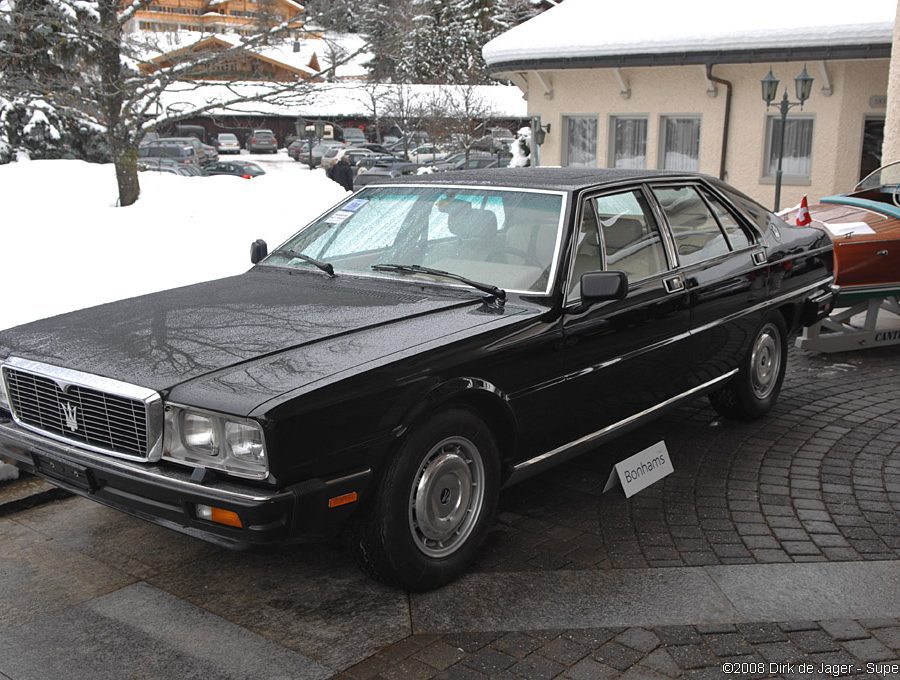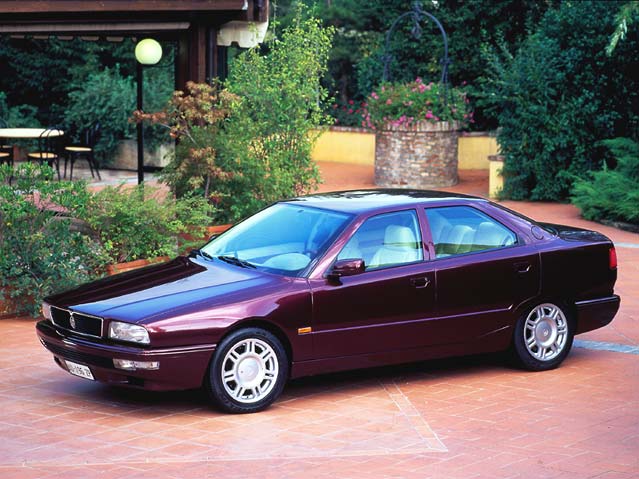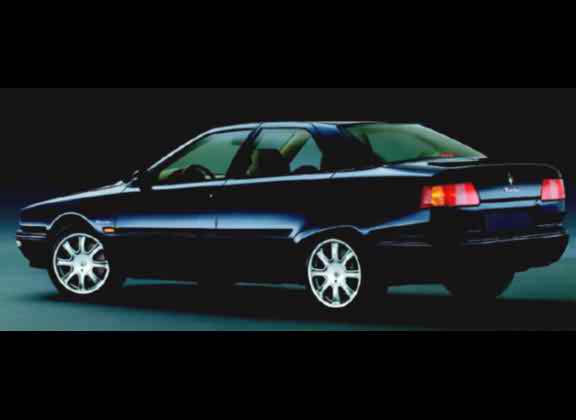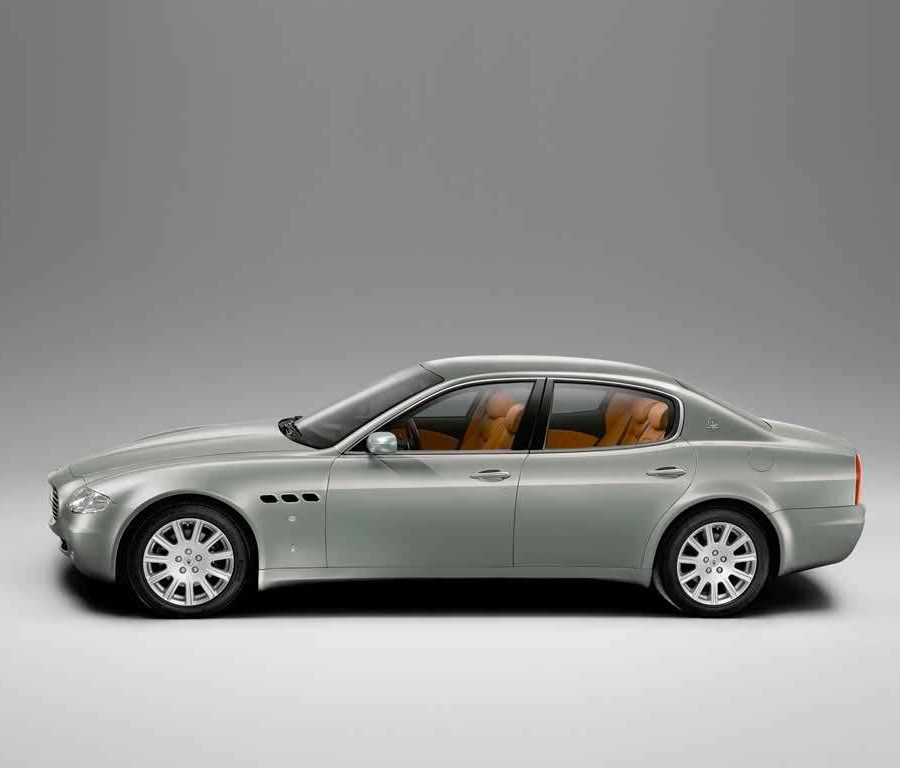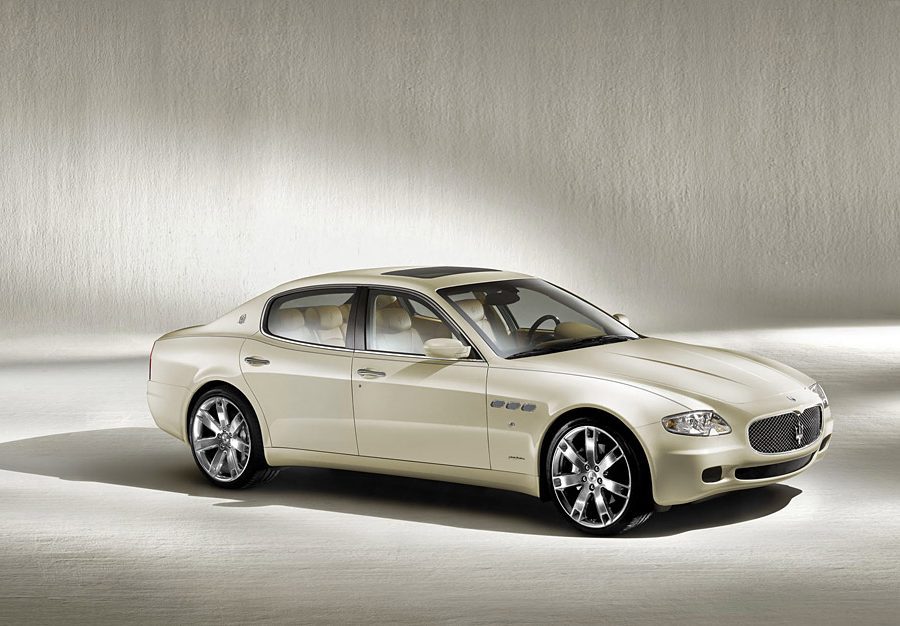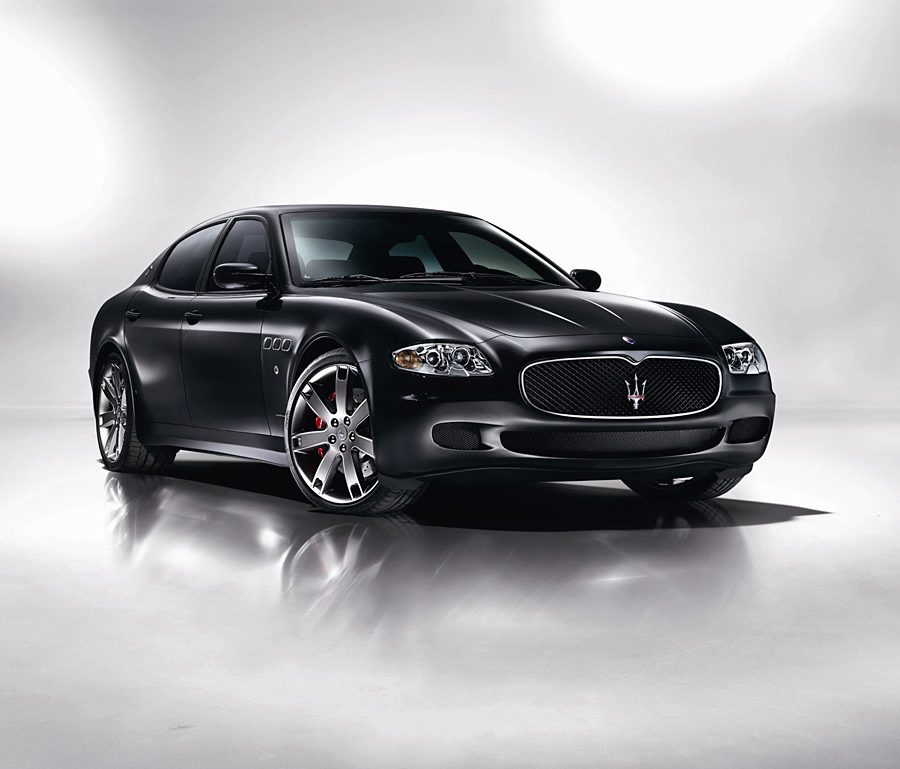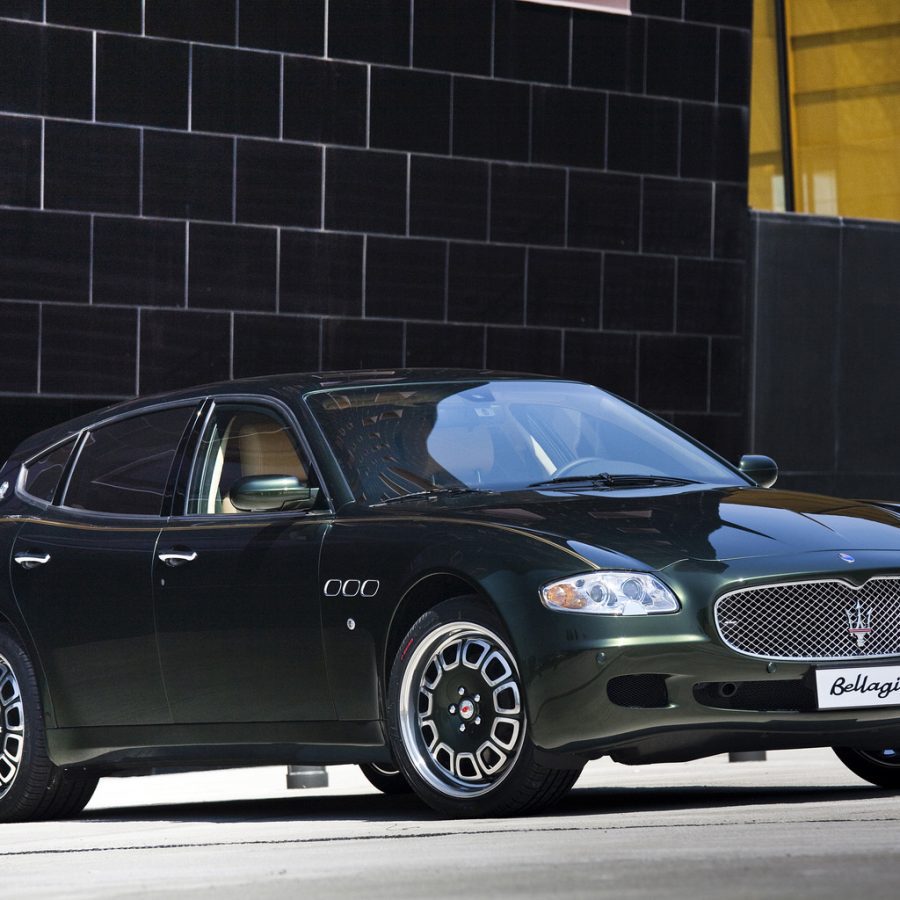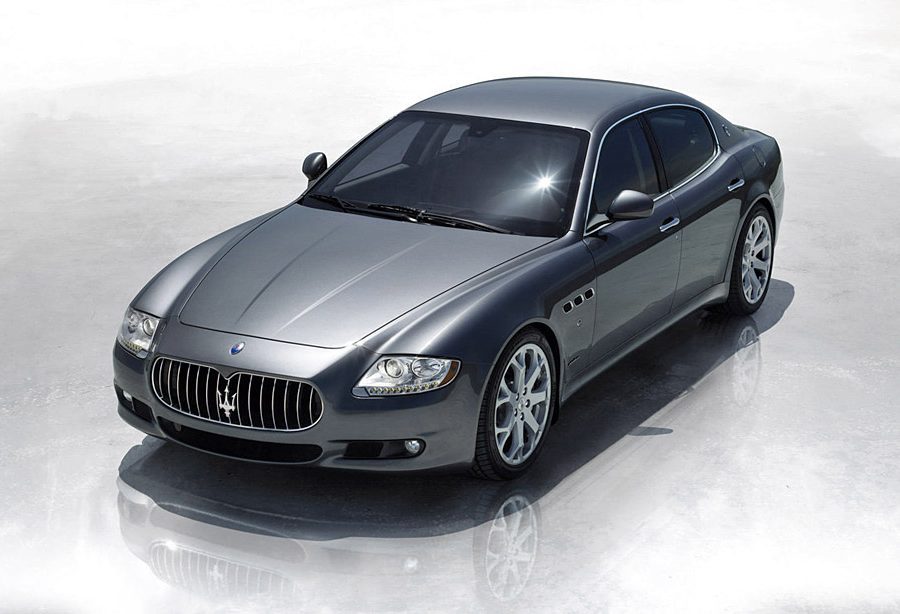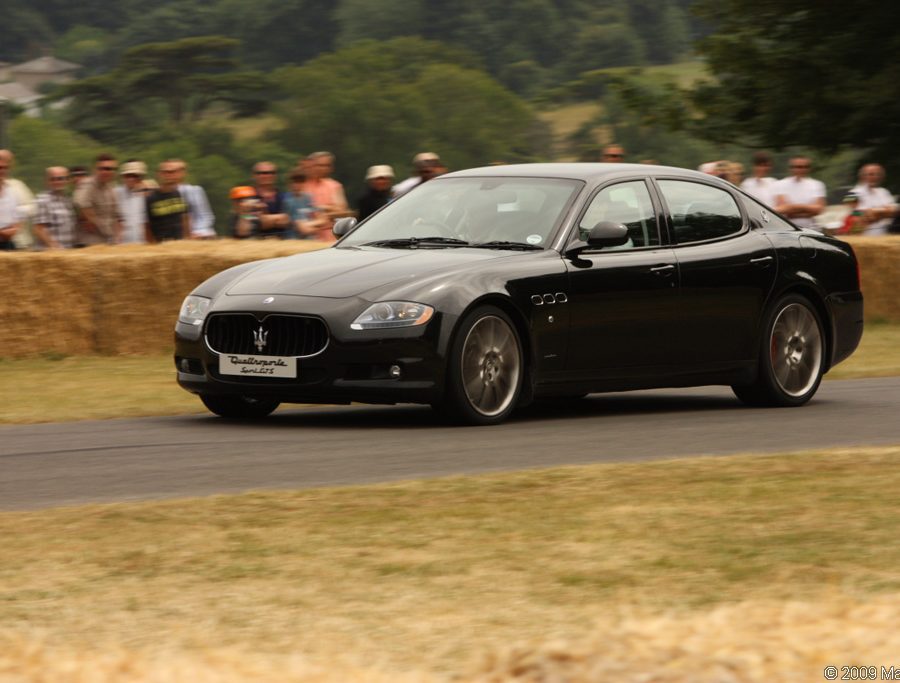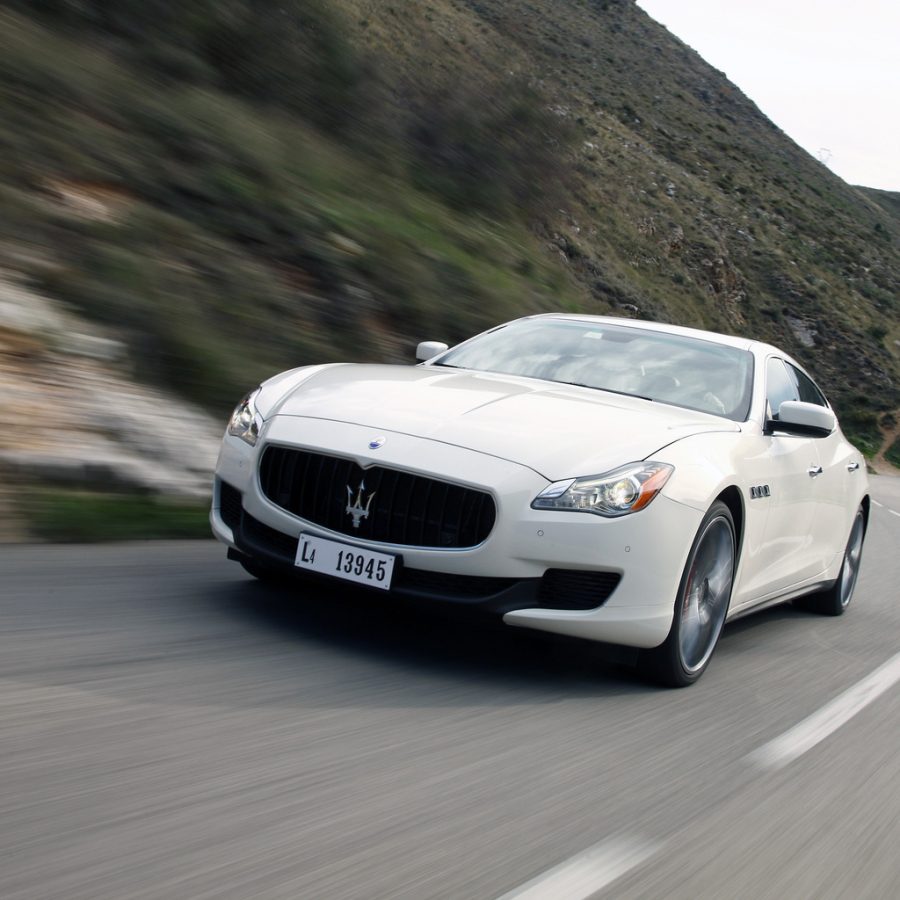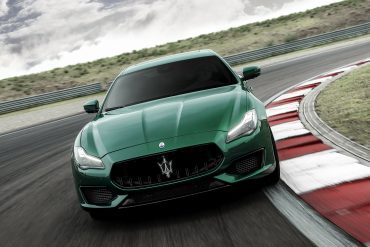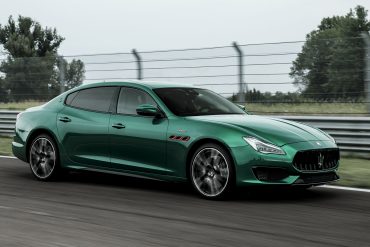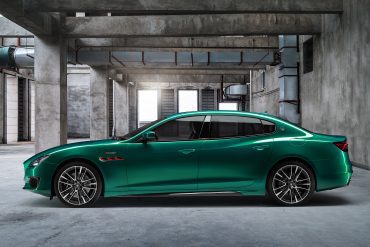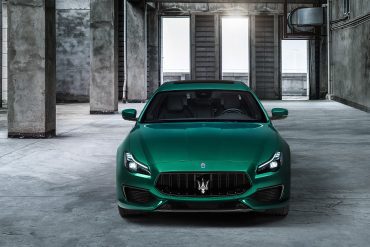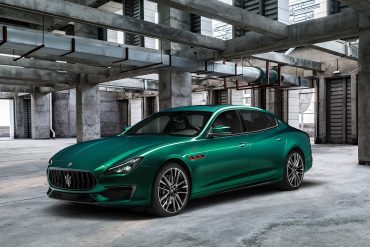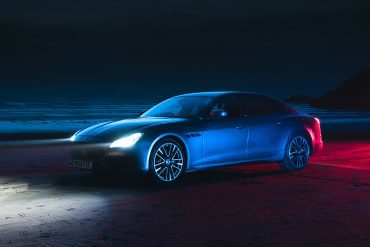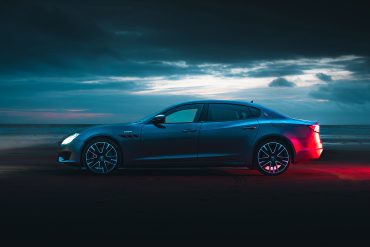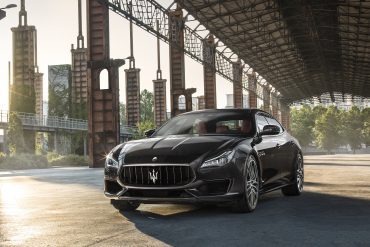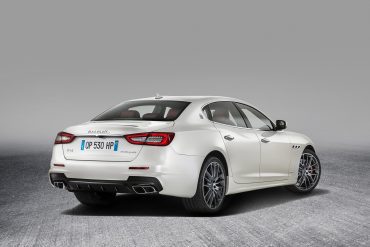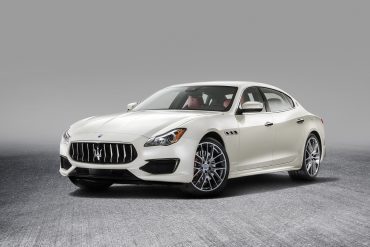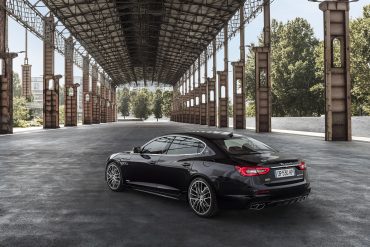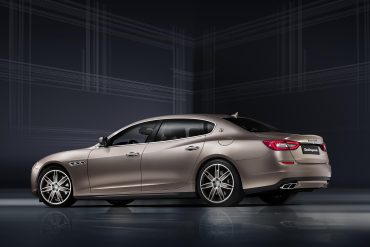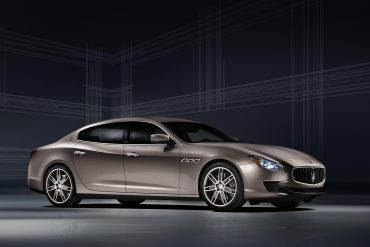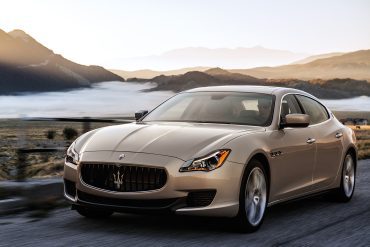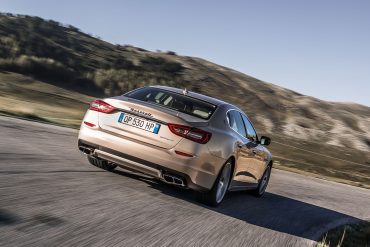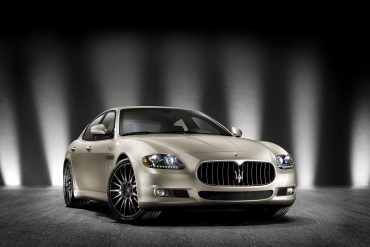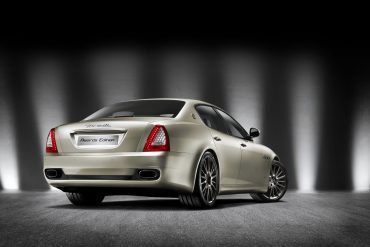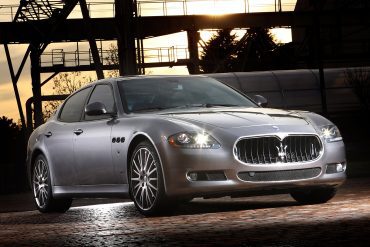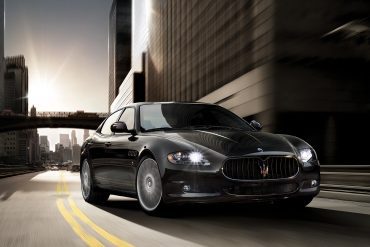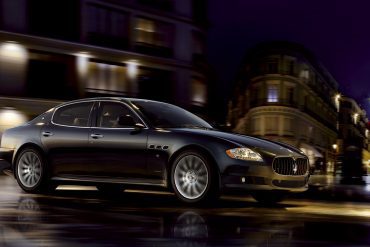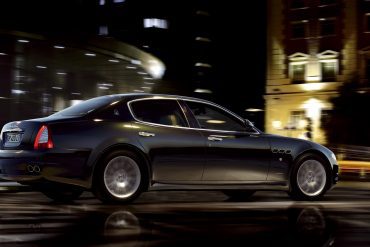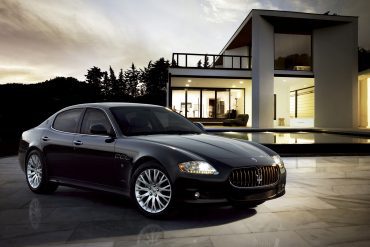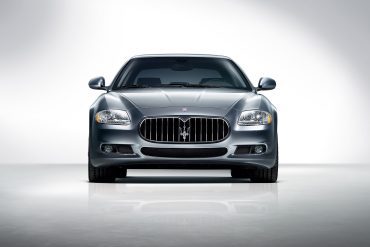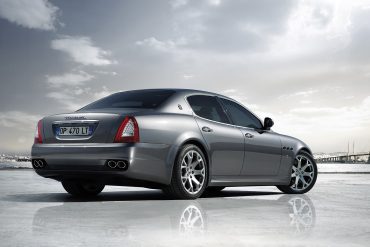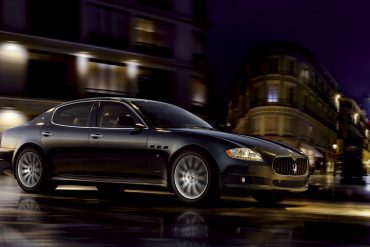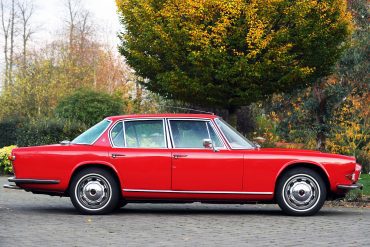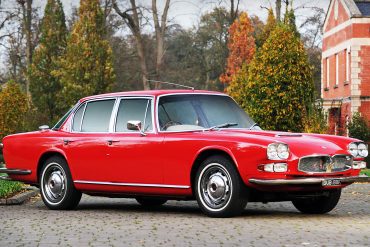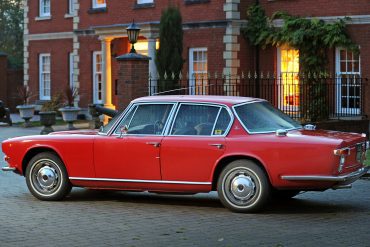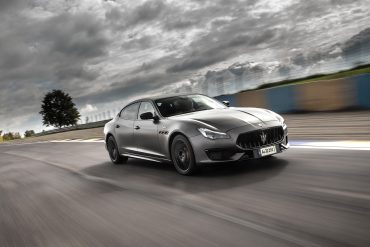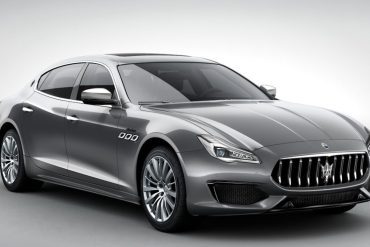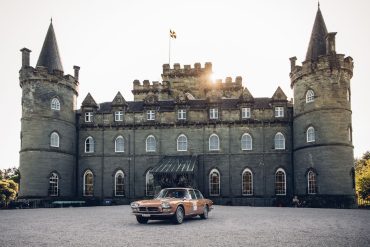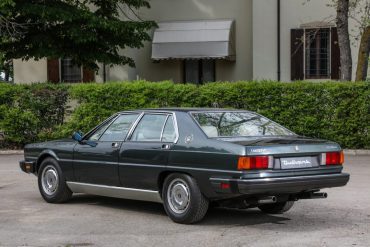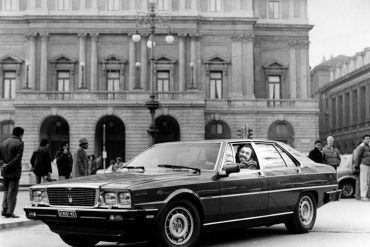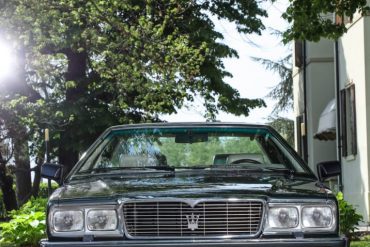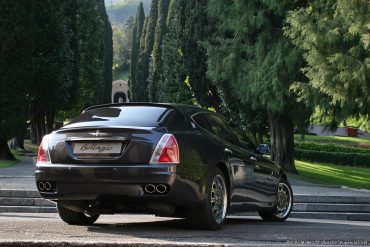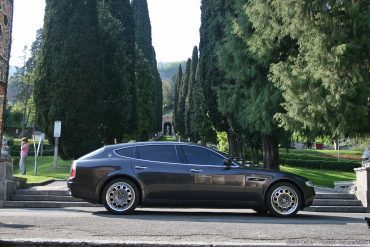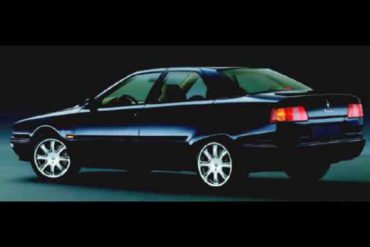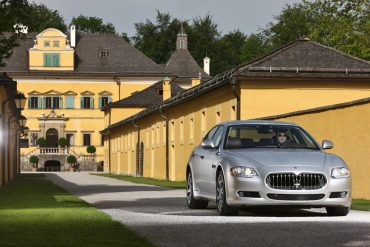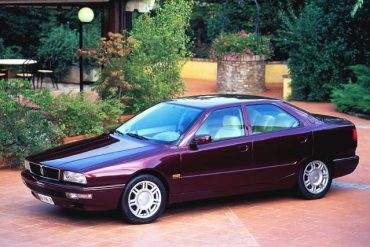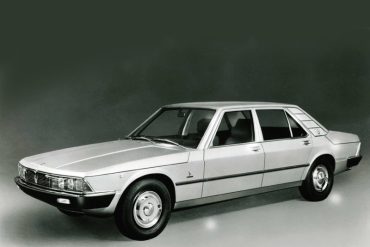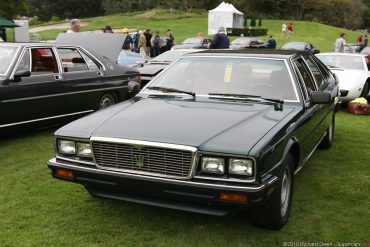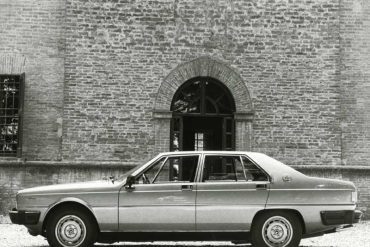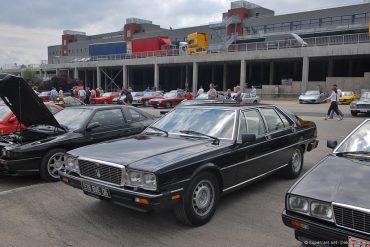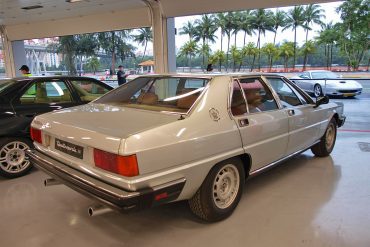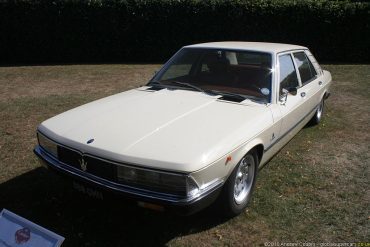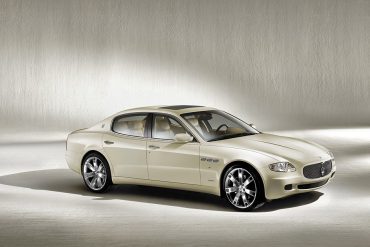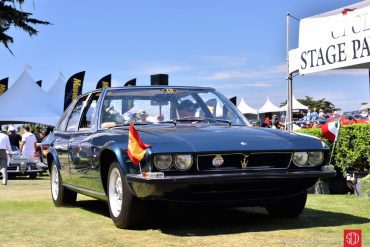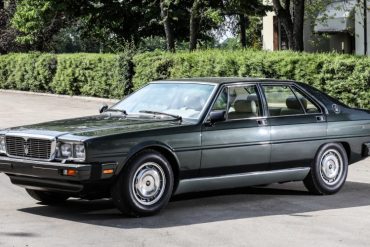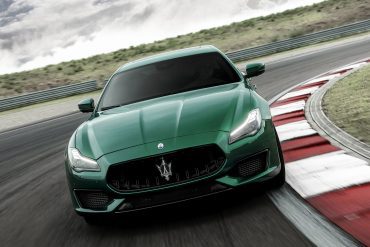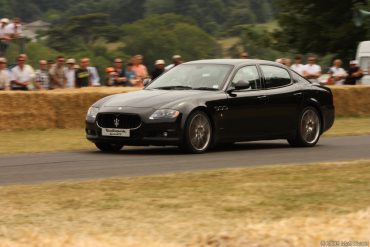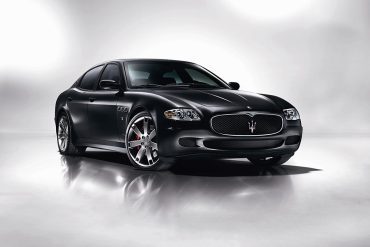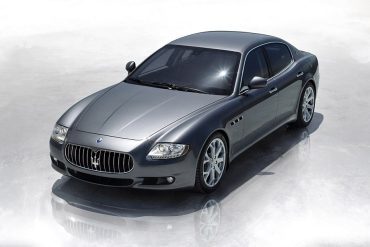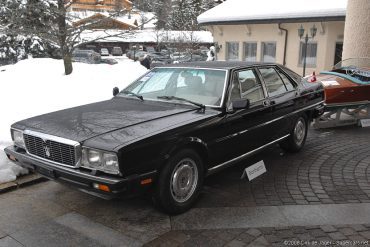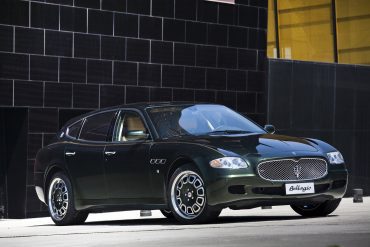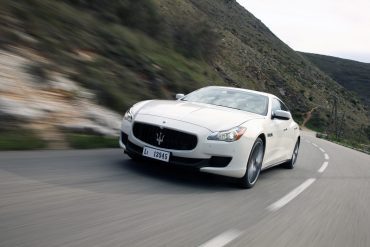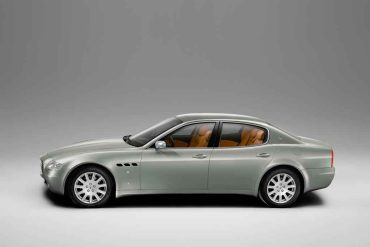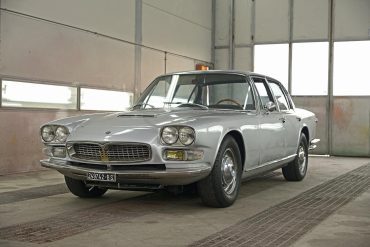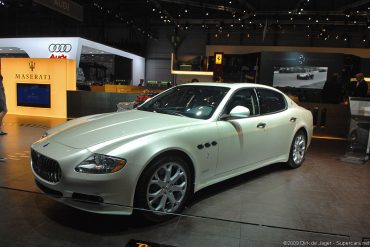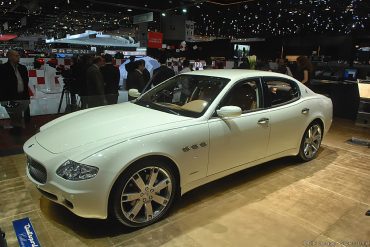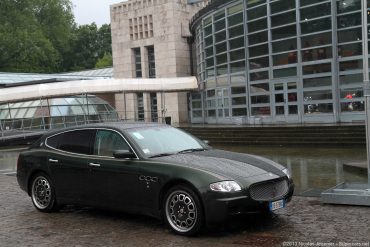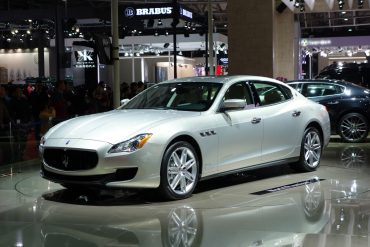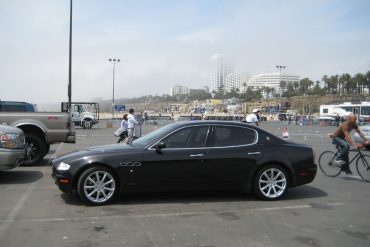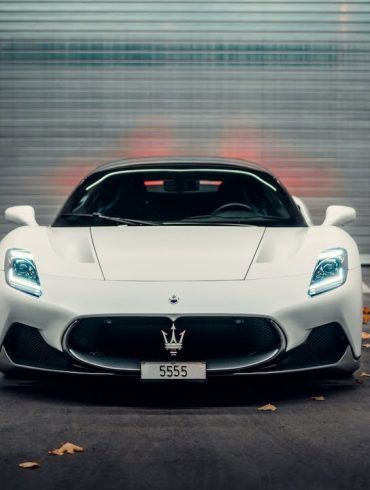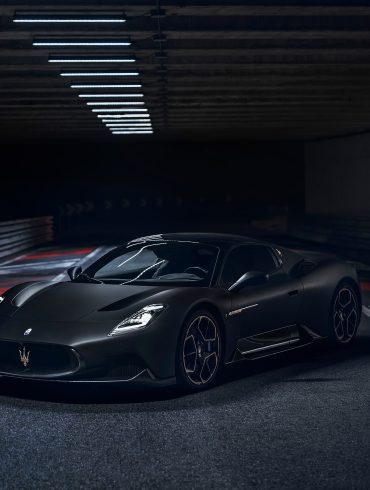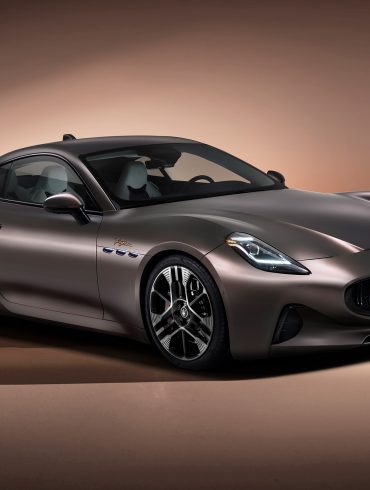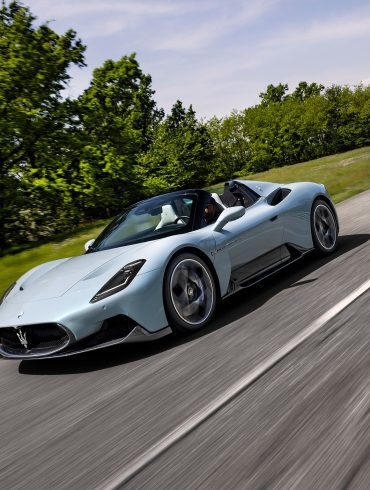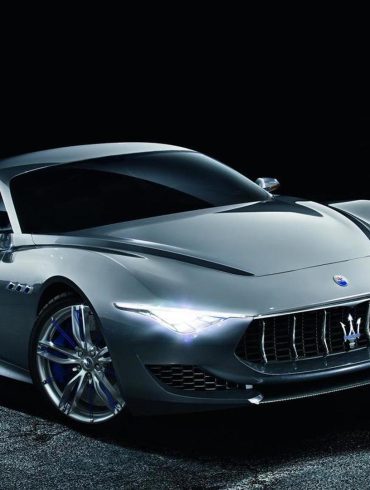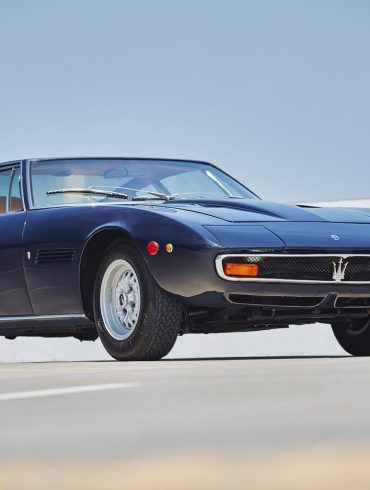Maserati Quattroporte
1963 - Present
Forget the backseat drivers, the Quattroporte puts them in charge! Explore the evolution of the ultimate Italian sports sedan, the Maserati Quattroporte. From 1963's groundbreaking V8 to today's technological marvels, experience a legacy of speed and style.
Overview / Featured / Generations / Models In-Depth / Image Gallery / More Updates
The Maserati Quattroporte - A Brief History
The Maserati Quattroporte, which translates from Italian as "four doors," first emerged in 1963 as a revolutionary blend of a high-performance sports car and a luxury sedan. This fusion marked a significant departure in the automotive world, establishing the Quattroporte as the pioneering vehicle in the luxury sport sedan segment. Over the years, it has become synonymous with Italian elegance, combining Maserati's race-bred performance with the sophistication and comfort expected from a premium four-door vehicle.
In the early part of the 1960s, Giulio Alfieri started to work on a completely new project that would, in retrospect, be seen as a revolutionary concept in the world of high-performance automobiles. Inspired by the success of its Gran Turismo cars, Maserati set its sights on a sedan the equal of its coupes and spyders. The new Quattroporte—Italian for “four doors”—would have to offer the same pedigree and level of elegance, refinement and power for which the marque had become famous. With a top speed of 143 mph, it was the fastest four-door production car at the time. The design was from stylist Pietro Frua, who took inspiration from his original 5000GT, and the bodies were built by Vignale. The car used a modern sheet-steel monocoque structure with box-section rails instead of a traditional tubular frame, and its 4.2-liter V8 engine derived from the unit used in the 5000GT. Seven examples were built with a 4.7-liter engine. Famous Quattroporte I customers included Anthony Quinn, Marcello Mastroianni, Alberto Sordi and Prince Rainier III of Monaco.
For 1966, the Quattroporte was further refined on a number of points and received a slight restyling. The double round headlights, a feature previously reserved only for vehicles sold in the US, were now standard on all cars and replaced the single, rectangular units of the first series. The car’s advanced De Dion-type rear axle was replaced by a more traditional rigid rear axle layout with leaf springs that derived from the Mistral. With this revision, the interior noise level was reduced by up to 20 dB when driving at highway speeds, making the Quattroporte not just fast, but luxuriously quiet inside. The interior was further refined with a new dashboard featuring a fully integrated climate-control system as standard equipment. Most Quattroporte I cars of the second series were fitted with the standard 4.2-liter V8 engine, but 64 cars received the larger 4.7-liter unit, and two cars were even equipped with a 4.9-liter engine variant.
The second-generation Quattroporte was developed during an obscure period in Maserati’s history, when the marque was under the ownership of Citroën. Technically identical to the Citroën SM, the Quattroporte II featured front-wheel drive and hydro-pneumatic suspension. Performance was not on par with the first-generation Quattroporte, and the car was not well received by Maserati purists. Nevertheless, the Quattroporte II was very comfortable, well equipped and offered an excellent ride. Its Bertone-designed body was modern and the build quality was very good. Unfortunately, the early end of the agreement with Citroën in 1975 hampered the launch of the Quattroporte II. Only 12 units were produced in its three years of production and they were all sold to customers in the Middle East.
The third generation of Maserati’s luxury sedan more than made up for the Quattroporte II. Alejandro De Tomaso—no fan of Citroën—discarded all Citroën technology used on the Quattroporte II. Mechanical parts came from the Kyalami, and the Quattroporte was again powered by a Maserati V8 engine and rear-wheel drive. The impressive body of the Quattroporte III was designed by Giugiaro and the steel body shells were built at the Innocenti plant near Milan, prior to assembly in Modena. When the car went on sale in 1979, it was an instant commercial success. In 1987, a restyled version called Quattroporte Royale offered an upgraded interior and more powerful 4.9-liter engine. Production of the Quattroporte III continued until 1990, with a total of 2,145 examples made.
The fourth generation of the Maserati Quattroporte was presented at the Turin Motor Show in April 1994. It was the first car to be presented under full Fiat ownership. The sober but elegant design came from Marcello Gandini, just like the spectacular Shamal five years earlier. In comparison to the first generations of the Quattroporte, the Quattroporte IV was very compact, but its performance was that of a true Gran Turismo, with a top speed of 161 mph and acceleration from 0 to 60 mph in less than six seconds. From 1996, the Quattroporte was also made available with the 3.2-liter, 32-valve V8 engine from the Shamal, which improved performance even further.
When Ferrari assumed control of Maserati in July 1997, one of the main objectives was to improve the quality of the vehicles. Although it was widely renowned for its excellent performance capabilities, the fourth-generation Quattroporte suffered reliability issues. Measurements taken were a complete revision of the production process, and hundreds of the Quattroporte’s components were redesigned in order to improve quality. The result was the revised Quattroporte Evoluzione of 1998.
While the Quattroporte IV was a compact sports sedan, the fifth-generation Quattroporte marked Maserati’s return to the upper-premium segment, in the spirit of the first-generation Quattroporte and the successful Quattroporte III. The Quattroporte V combined a spacious interior and the highest levels of luxury and comfort with a true sports-car drivetrain. It featured a powerful dry-sump V8 engine, mounted well back in the chassis, and a transaxle transmission for perfect weight distribution and excellent dynamic qualities. After its launch at the 2003 Frankfurt Motor Show, the Quattroporte became an instant commercial success for Maserati and won numerous awards, thanks in part to its astonishing Pininfarina-designed bodywork, today regarded as a modern classic design.
The most important technical evolution for the Quattroporte came with the introduction of an automatic version at the 2007 Detroit Motor Show. While the Quattroporte with Duoselect transmission has proven to be an ideal match for Maserati’s sporty reputation, demand for a fully automatic version had always been present. The Quattroporte Automatica is much more than a Quattroporte simply fitted with a new gearbox. Of the 16,500 components from which the Quattroporte was made, 4,800 were new. The powertrain was completely revised, with the adaption of a new wet sump engine (F136UC), six-speed automatic ZF gearbox, propeller shaft and limited-slip differential. The Quattroporte Automatica was available in standard version as well as Sport GT and Executive GT. The Sport GT was later on replaced by the more expressive Sport GT S.
Five years after its launch and with more than 15,000 vehicles produced, Maserati’s highly successful Quattroporte underwent a discrete restyling. Pininfarina reworked the Maserati flagship without affecting the purity and elegance of its original design. The new front and rear gave the car a fresh, modern look, while at the same time enhancing the connection with the GranTurismo models. The interior was updated with a new infotainment and satellite navigation system, and new interior colors. Under the hood, the classic 4.2-liter V8 wet-sump engine was joined by a more powerful 4.7-liter version for the Quattroporte S and the Quattroporte Sport GT S. The latter was undoubtedly the most exciting combination of a luxury sedan and a performance sports car that Maserati had ever produced, and was praised by the international press as a “sports car in black tie.” The restyled Quattroporte models were available with an automatic six-speed transmission only, as the Duoselect option was discontinued.
The sixth generation of the Maserati Quattroporte, introduced in 2013, represents a significant step forward in the evolution of Maserati's flagship luxury sedan. Combining a rich tradition of Italian craftsmanship with cutting-edge technology and performance, the Quattroporte VI (M156) has helped redefine what a luxury sports sedan can be, bringing Maserati’s distinctive style and passion to a global audience. As it continues to evolve, it carries forward the legacy of a brand synonymous with luxury, performance, and Italian craftsmanship, making it a flagship in the truest sense.
The importance of the Quattroporte in Maserati's lineup cannot be overstated. It was introduced at a time when Maserati was primarily known for its racing successes and two-door sports cars. The introduction of a luxury sedan that could offer the performance of a sports car wrapped in a refined and spacious interior helped Maserati carve out a unique niche in the automotive market.
This model not only expanded Maserati’s market reach but also set a standard for luxury sedans that blend sportiness with everyday usability, influencing countless other models in the ensuing decades. As the Quattroporte has evolved through its successive generations, it has continuously adapted to changing tastes and technologies while maintaining the core attributes of performance and luxury that define Maserati.
Did You Know
When it debuted, the Quattroporte's powerful V8 made it the world's fastest production four-door car.
The Quattroporte Royale, with stretched wheelbase, extra luxury, and even armor plating, was used by Italian presidents.
"Quattroporte" is Italian for "four doors."
"The Quattroporte seduces all your senses, a true Italian affair of style, sound, and performance."
Car and Driver on the 2014 model
Maserati Quattroporte Generations
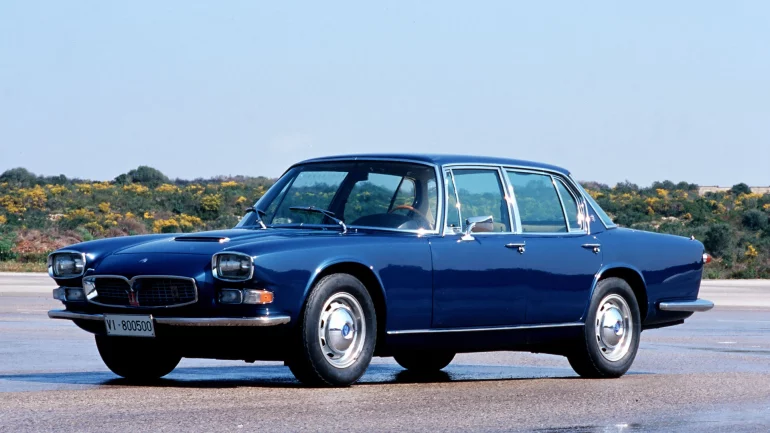
1st Generation Quattroporte Basics
Production: 1963–1969
Designer: Pietro Frua
Layout: Front-engine, RWD
Engine: 4.1 L V8, 4.7 L V8
Trans: 5-sp manual, 3-sp auto
Wheelbase: 2,750 mm
Length: 5,000 mm
Width: 1,720 mm
Height: 1,360 mm
Kerb weight: 1,757 kg
Did You Know
Designed by Pietro Frua, its body was hand-crafted by the skilled artisans at Vignale.
Celebrity owners included actors Peter Sellers and Anthony Quinn.
Variants
Quattroporte 4200
Quattroporte 4700
Quattroporte I (AM107, 1963–1969)
In 1963, Maserati introduced the Quattroporte I, a model that not only expanded the company's portfolio but also created a new market segment: the luxury sports sedan. With the Quattroporte, Italian for "four doors," Maserati successfully combined the performance of a grand touring sports car with the comfort and practicality of a four-door vehicle, setting a standard that many luxury car manufacturers would follow.
The Quattroporte I was designed by Pietro Frua, who was responsible for several stunning Maseratis of the era. The car featured elegant, understated styling with long, clean lines that conveyed both luxury and speed. The body was notably well-proportioned, managing to mask its relatively large size with a design that exuded sportiness and grace.
Underneath its stylish exterior, the Quattroporte I was built on a modified version of the chassis used in the Maserati 5000 GT, ensuring a solid foundation that was capable of handling high speeds with ease. This chassis provided the Quattroporte with the necessary rigidity and balance needed for both performance driving and comfortable cruising.
At the heart of the Quattroporte I was Maserati's powerful 4.1-liter V8 engine, which produced approximately 260 horsepower. This engine allowed the Quattroporte to reach top speeds that were unprecedented for a four-door sedan at the time, reportedly capable of exceeding 200 km/h (124 mph). This made the Quattroporte one of the fastest sedans in the world, living up to Maserati's reputation for producing high-performance automobiles.
The engine was linked to a 5-speed manual transmission or an optional 3-speed automatic, which was a rarity at the time and highlighted the Quattroporte's dual nature as both a driver's car and a luxury cruiser. The car's powertrain was also equipped with a limited-slip differential, enhancing its handling and traction.
The interior of the Quattroporte I was nothing short of opulent, tailored to meet the standards of the most discerning clientele. It featured rich leather upholstery, fine wood trim, and plush carpets. The dashboard was elegantly designed, housing an array of instruments and controls that were both functional and aesthetically pleasing. This attention to detail ensured that the cabin was not only comfortable but also exquisitely crafted, reflecting the luxury expected from a top-tier Italian automobile.
During its production run from 1963 to 1969, the Quattroporte I was well-received for its unique combination of high performance and luxury. It appealed to a niche market of wealthy buyers who desired the driving dynamics of a sports car but needed the practicality of a sedan for family or business use. The Quattroporte I set a new benchmark for what a luxury sedan could be, paving the way for future models that would continue to blend high performance with high-end luxury.
The impact of the Quattroporte I extends beyond its production years. It helped establish the market for luxury sports sedans. Today, the Quattroporte I is regarded as a classic, a pioneering vehicle that introduced the concept of speed, power, and elegance to the realm of four-door sedans.
Maserati Quattroporte II (AM123, 1974–1978)
The Quattroporte II, produced from 1974 to 1978, marked a distinct phase in Maserati's history, showcasing a dramatic departure from its predecessor's classic design and engineering principles. This model was born during a tumultuous period for the company, under the ownership of Citroën. The Quattroporte II embodied an ambitious blend of Italian flair with French hydraulic technology, resulting in a vehicle that was both innovative and controversial.
Styled by Marcello Gandini of Bertone, who was renowned for his work on the Lamborghini Countach and Miura, the Quattroporte II featured a strikingly modern design that was quite a departure from the more conservative aesthetics of the original Quattroporte. Its appearance was characterized by a long, low profile with distinctively angular lines, a large glasshouse that emphasized visibility, and dual headlights integrated into the grille. This design was bold and forward-thinking, reflecting the avant-garde tastes of the 1970s.
The most revolutionary aspect of the Quattroporte II was its incorporation of Citroën's hydraulic technology, which was used to operate the brakes, steering, and suspension systems. This technology promised a level of comfort and smooth handling that was unmatched at the time. The hydropneumatic suspension system, in particular, was designed to provide a supremely smooth ride by adjusting the car's height dynamically, adapting to various road conditions and speeds.
However, while technologically advanced, these systems were also complex and prone to reliability issues, which later led to challenges in maintenance and service, particularly as the car aged and Citroën's involvement with Maserati waned.
Under the hood, the Quattroporte II was equipped with a 3.0-liter V6 engine, the same unit found in the Maserati Merak and the Citroën SM. This engine was capable of producing around 190 horsepower, which was modest by luxury sedan standards, particularly given the car's substantial weight due to its complex hydraulic systems. The engine was mated to a three-speed automatic transmission, which emphasized comfort and smooth power delivery over outright performance.
Despite its underwhelming power output, the Quattroporte II was designed with a focus on luxury and ride quality rather than high-speed performance. This was a significant shift from the first-generation Quattroporte, which was celebrated for its sporty characteristics.
Inside, the Quattroporte II continued its focus on luxury, with a spacious and well-appointed cabin. It featured high-quality leather upholstery, wood trim, and an array of advanced features for its time, such as powered accessories and an optional high-fidelity sound system. The comfort and space provided were excellent, catering to clients who prioritized these aspects in a high-end sedan.
Production of the Quattroporte II was limited, with only 13 cars built due to the 1973 oil crisis, changes in ownership, and the eventual bankruptcy of Citroën. This rarity has made the Quattroporte II a collector’s item.
Despite its limited production and the challenges associated with its technological features, the Quattroporte II remains a fascinating chapter in Maserati's history.

2nd Generation Quattroporte Basics
Production: 1976–1978
Designer: Marcello Gandini
Layout: Front mid-engine, FWD
Platform: Citroën SM
Engine: 3.0 L Tipo AM 114.56.30 V6
Transmission: 5-speed manual
Wheelbase: 3,070 mm
Length: 5,130 mm
Width: 1,870 mm
Height: 1,400 mm
Kerb weight: 1,732 kg
Did You Know
This Quattroporte was initially born during Citroën's ownership of Maserati. That means it shares its unique hydropneumatic suspension and front-wheel-drive layout with the Citroën SM!
Production numbers are debated, but it's estimated only a mere 13 Quattroportes of this generation were ever built, making them incredibly rare.
Variants
Quattroporte II
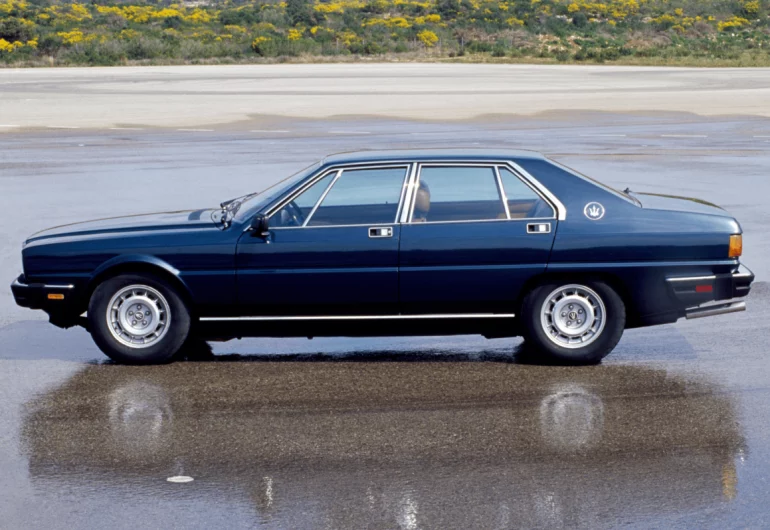
3rd Generation Quattroporte Basics
Also called: Maserati 4porte, Maserati Royale
Production: 1979–1990
Designer: Giorgetto Giugiaro
Layout: Front-engine, RWD
Engine: 4.2 L V8, 4.9 L V8
Trans: 5-sp manual, 3-sp auto
Wheelbase: 2,800 mm
Length: 4,910 mm
Width: 1,890 mm
Height: 1,385 mm
Kerb weight: 1,780 kg
Did You Know
The Quattroporte Royale was a special edition with armored protection, lengthened wheelbase, and luxurious upgrades. Italian presidents used it as their official car.
The Quattroporte was available in standard form and in the exclusive Royale trim, with its stretch limousine-like dimensions and enhanced luxury.
Variants
Quattroporte 4200
Quattroporte 4900
Royale
Maserati Quattroporte III/Royale (AM330, 1979–1990)
The Maserati Quattroporte III, also known as the Royale in its later luxurious iterations, marked a significant return to form for Maserati.
Introduced in 1979 and produced until 1990, this model represented a revival of the brand’s core values of luxury and performance, embodying the essence of a grand touring sedan with a distinctly Italian flair. Under the leadership of Alejandro de Tomaso, Maserati’s focus shifted towards delivering high-performance luxury vehicles, a vision that was perfectly encapsulated by the Quattroporte III.
The design of the Quattroporte III was the work of Giorgetto Giugiaro at Italdesign, who was tasked with creating a vehicle that combined elegance with powerful road presence. The result was a car that was both modern and stately, with a long, angular body that featured sharp lines and a wide stance. This design was a departure from the more curvaceous styles of the 1960s and 70s, moving towards a more robust and formal appearance that appealed to luxury buyers of the 1980s.
The interior of the Quattroporte III was equally impressive, with a focus on comfort and luxury. The cabin was spacious and adorned with fine materials, including leather upholstery, wood veneers, and plush carpets. Advanced features for the era, such as electronic climate control and high-end audio systems, were standard, enhancing the car’s appeal as a high-end luxury sedan.
Under the hood, the Quattroporte III was initially powered by a 4.2-liter V8 engine, which was later joined by a more powerful 4.9-liter V8. These engines were derivatives of the powertrains used in the Maserati Khamsin, providing ample power and a characteristic Italian V8 roar. The engines were linked to either a three-speed automatic transmission or a five-speed manual, catering to different driver preferences.
The larger 4.9-liter engine, in particular, delivered impressive performance, with over 280 horsepower that enabled the sedan to reach top speeds in excess of 230 km/h (143 mph), making it one of the fastest sedans of its time.
In 1986, Maserati introduced the Quattroporte Royale as a high-end version of the Quattroporte III. The Royale featured even more luxurious appointments, such as increased use of fine woods and silks in the interior, rear-seat tables, and additional creature comforts that emphasized its status as a limousine for the wealthy. Mechanically, the Royale was equipped exclusively with the 4.9-liter V8, ensuring that its performance matched its opulent fittings.
The Quattroporte III was well-received in markets around the world. Throughout its production run, it helped stabilize Maserati’s financial situation and reaffirmed its status in the luxury car market. The Quattroporte III/Royale’s legacy is significant as it bridged the gap between the classical Maserati luxury sports sedans of the early years and the more modern interpretations that followed.
Today, the Quattroporte III/Royale is celebrated among collectors for its unique combination of 1980s luxury and classic Italian performance.
Maserati Quattroporte IV (AM337 1994–2001)
The Maserati Quattroporte IV, introduced in 1994 and produced until 2001, marked a significant evolution in the storied lineage of Maserati's luxury sedan series.
Under the design expertise of Marcello Gandini, who was known for his work on the Lamborghini Countach and Diablo, the Quattroporte IV showcased a radical departure from the boxy designs of the 1980s, embracing a more rounded, aerodynamic aesthetic that aligned with the automotive trends of the 1990s.
This model not only represented a technological advancement but also a crucial period in Maserati’s history as it strived to redefine its brand in the luxury car market.
The Quattroporte IV's design was a blend of traditional elegance and modern dynamism, featuring a more compact body that was both stylish and functional. The car's lines were smoother and more fluid than its predecessor's, reflecting a shift towards a design that prioritized aerodynamic efficiency and a contemporary look. The signature Gandini-styled sharp angles and truncated tail were distinctive elements that set it apart from its competitors, making it instantly recognizable as a Maserati.
Inside, the Quattroporte IV continued Maserati’s tradition of luxurious interiors, offering high-quality leather upholstery, exquisite wood trim, and advanced technological features for its time. The cabin provided a comfortable and inviting atmosphere, with a strong focus on enhancing the driving experience through both comfort and control.
Maserati equipped the Quattroporte IV with a variety of engines over its production cycle, starting with a 2.0-liter twin-turbo V6, designed to meet Italian tax regulations, which favored engines under two liters. This engine, though small, was capable of producing an impressive 280 horsepower. For markets without such restrictions, Maserati offered a 2.8-liter V6, also twin-turbocharged, which produced around 284 horsepower and provided significant torque.
In 1996, the introduction of the Quattroporte IV Evoluzione marked a significant upgrade in terms of both mechanical components and build quality. The Evoluzione models featured enhancements derived from Ferrari technology, as Ferrari had taken control of Maserati in 1997. These improvements included better build quality, refined suspension systems, and upgraded brakes, which collectively sharpened the car's performance and reliability.
The Quattroporte IV was pivotal in revitalizing the Maserati brand during a period of recovery and realignment. Its blend of performance, style, and luxury appealed to a clientele that desired a distinctive and dynamic luxury sedan. The model competed effectively in the international market, strengthening Maserati’s presence in the luxury segment.
The Quattroporte IV’s legacy is characterized by its role in transitioning Maserati into a modern luxury car manufacturer. It was a vehicle that balanced traditional Maserati luxury with contemporary needs for performance and style, setting the stage for future developments in the Quattroporte series.
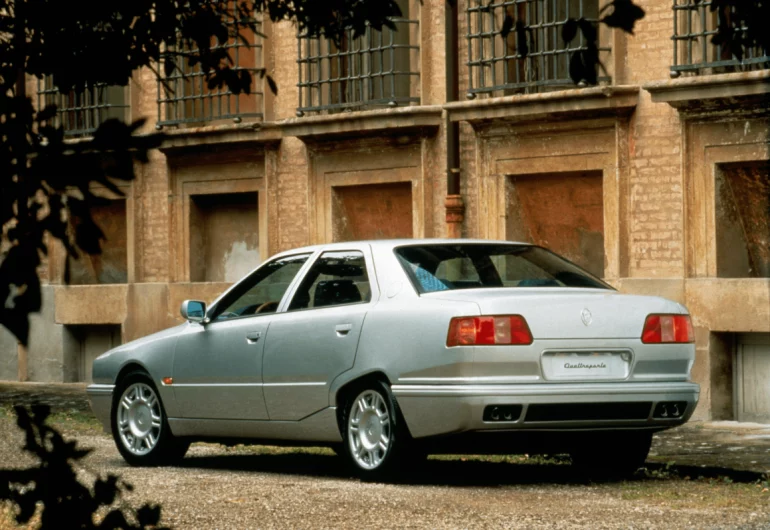
4th Generation Quattroporte Basics
Production: 1994–2001
Designer: Marcello Gandini
Layout: Front-engine, RWD
Platform: Maserati Biturbo
Engine: 2.0 L AM573 twin-turbo V6, 2.8 L AM574 twin-turbo V6, 3.2 L AM578 twin-turbo V8
Trans: 6-sp manual, 4-sp auto
Wheelbase: 2,650 mm
Length: 4,550 mm
Width: 1,810 mm
Height: 1,380 mm
Kerb weight: 1,543–1,675 kg
Did You Know
The Quattroporte shared a platform and its potent twin-turbocharged V6 and V8 engines with Ferrari models of the era.
Limited Edition 'Evoluzione': A rare performance-focused version was introduced in 1998 with upgraded power, suspension, and interior enhancements.
Variants
Seicilindri 2.0 (1994-1998)
Seicilindri 2.8 (1994-1998)
V6 Evoluzione 2.8 (1998-2001)
Ottocilindri 3.2 (1996-1998)
V8 Evoluzione 3.2 (1998-2001)
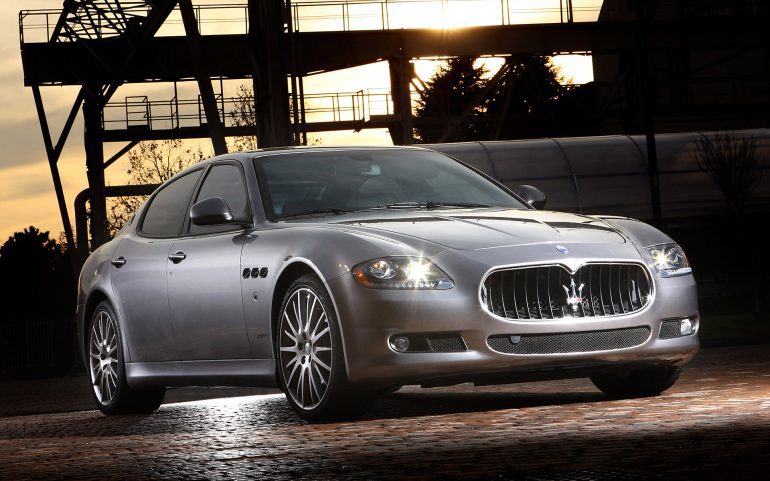
5th Generation Quattroporte Basics
Production: 2003–2012
Designer: Ken Okuyama
Layout: Front-mid-engine, RWD
Platform: Maserati M139
Engine: 4.2 L & 4.7 L Ferrari V8
Trans: 6-speed automated manual, 6-speed ZF 6HP26 auto
Wheelbase: 3,064 mm
Length: 5,052 mm
Width: 1,895 mm
Height: 1,423 mm - 1,438 mm
Kerb weight: 1,930 kg - 1,990 kg
Did You Know
The Quattroporte's sonorous V8 engine was derived from a Ferrari unit offering intoxicating sound and thrilling performance.
This generation significantly increased the Quattroporte's dimensions, giving it grander presence and more interior space.
Variants
DuoSelect (2003-2008)
Automatica (2007-2008)
Sport GT S (2007-2008)
Quattroporte (2008-2012)
S (2008-2012)
S (2012)
Sport GT S (2008-2012)
Sport GT S (2012)
Maserati Quattroporte V (M139, 2003–2012)
The Maserati Quattroporte V, launched in 2003 and produced until 2012, marked a pivotal moment in Maserati's history, symbolizing the brand's resurgence in the global luxury car market. This iteration of the Quattroporte was critically important for Maserati as it not only reintroduced the brand to a broader audience but also reaffirmed its reputation for crafting vehicles that combine high performance with exquisite Italian craftsmanship.
Designed by Pininfarina, the Quattroporte V stood out with its elegant and harmonious lines, which brought a much-needed modernity to the Maserati lineup while maintaining the brand's signature aesthetics. The car's exterior was characterized by its long, flowing hood, distinctive front grille with the iconic trident emblem, and a coupe-like silhouette despite its four-door configuration. This design philosophy aimed to blend sportiness with the luxury and space of a sedan, appealing to those who sought both performance and comfort.
Inside, the Quattroporte V was a showcase of luxury materials and meticulous craftsmanship. The cabin featured Poltrona Frau leather, fine wood trims, and detailed stitching, creating a sumptuous and inviting atmosphere. The layout of the dashboard and controls was both ergonomic and aesthetically pleasing, ensuring that the vehicle's interior was as functional as it was beautiful.
Underneath its stylish exterior, the Quattroporte V was powered by a Ferrari-developed 4.2-liter V8 engine, delivering 400 horsepower and enabling the sedan to reach 0 to 60 mph in just 5.6 seconds, with a top speed of around 167 mph. This engine was later complemented by a more powerful 4.7-liter V8 in the Quattroporte Sport GT S variant, which produced up to 433 horsepower. These engines were renowned not only for their power and reliability but also for the exhilarating soundtrack that only an Italian V8 could provide.
The Quattroporte V initially featured a DuoSelect automated manual transmission, which was mounted at the rear in a transaxle layout for optimal weight distribution. While this setup was praised for its sporty driving dynamics, it faced criticism for its usability in everyday driving situations.
In response, Maserati introduced a more traditional automatic transmission in 2007, which significantly improved the car's appeal by enhancing the driving experience with smoother shifts and better suitability for daily use.
The Quattroporte V was equipped with cutting-edge technology for its time. It included an adaptive suspension system known as the Skyhook system, which automatically adjusted damping to provide a balance between comfort and handling.
Additionally, the car featured various driver aids, such as stability control, traction control, and anti-lock brakes, alongside luxury amenities like an advanced infotainment system and climate control, which further solidified its status as a premium sedan.
The Quattroporte V played a crucial role in Maserati's revival in the early 2000s, significantly boosting the brand's sales and visibility worldwide. It appealed to a demographic that desired the sportiness of a high-performance luxury car combined with the practicality and comfort of a sedan.
The vehicle's blend of dynamic driving characteristics, striking design, and Italian elegance helped it compete favorably against other luxury sedans from established brands, carving out a niche in the competitive luxury market.
Maserati Quattroporte VI (M156, 2013–present)
The sixth generation of the Maserati Quattroporte, introduced in 2013, represents a significant step forward in the evolution of Maserati's flagship luxury sedan. Combining a rich tradition of Italian craftsmanship with cutting-edge technology and performance, the Quattroporte VI (M156) has helped redefine what a luxury sports sedan can be, bringing Maserati’s distinctive style and passion to a global audience.
The design of the Quattroporte VI is a masterful blend of elegance and aggression, characterized by its long, low silhouette and a dynamic, sculptural quality to the bodywork. The car was designed by Lorenzo Ramaciotti at Pininfarina, who aimed to create a vehicle that was visually striking yet unmistakably Maserati. The front of the car features the iconic Maserati grille with the trident logo, flanked by sleek, aggressive headlights. The body lines flow back from the front, giving the car a sense of speed and fluidity even when stationary.
The interior of the Quattroporte VI exudes luxury, with a spacious and beautifully appointed cabin that features premium materials such as fine leather, wood, and metal finishes. The layout is driver-focused, with an intuitive control system and a state-of-the-art infotainment system that provides both entertainment and essential driving information.
Under the hood, the Quattroporte VI offers a range of powerful engine options designed to cater to varying tastes and markets. The engine lineup includes a 3.0-liter V6 twin-turbocharged engine producing up to 424 horsepower, and a more potent 3.8-liter V8 twin-turbo, which delivers up to 523 horsepower. These engines are the result of a collaboration between Maserati and Ferrari, ensuring not only high performance but also the thrilling exhaust note that Maserati enthusiasts cherish.
Performance is matched with advanced handling capabilities thanks to a well-tuned chassis, adaptive suspension, and sophisticated driving aids that ensure the car remains both comfortable and dynamically capable. This setup allows the Quattroporte VI to deliver a driving experience that is both exhilarating and secure, suitable for long-distance comfort as well as spirited driving.
Technology is at the heart of the Quattroporte VI, which features an array of modern amenities that enhance both driver and passenger experiences. The sedan comes equipped with an advanced infotainment system that supports navigation, multimedia entertainment, and connectivity options, seamlessly integrated into the luxurious environment of the car.
Safety technologies include advanced driver-assistance systems such as adaptive cruise control, lane departure warnings, and collision avoidance systems, which help to make driving safer and more enjoyable.
Since its launch, the Quattroporte VI has been critical in defining the modern era of Maserati, combining traditional luxury with contemporary performance and technology. It has strengthened Maserati's position in the competitive luxury sedan market, appealing to a broad audience that values both heritage and innovation.
The Quattroporte VI continues to evolve, with updates and refinements that keep it at the forefront of luxury and performance. Its blend of Italian design, advanced technology, and exhilarating performance ensures that it remains a desirable choice for those seeking a luxury sedan that stands out from the crowd.
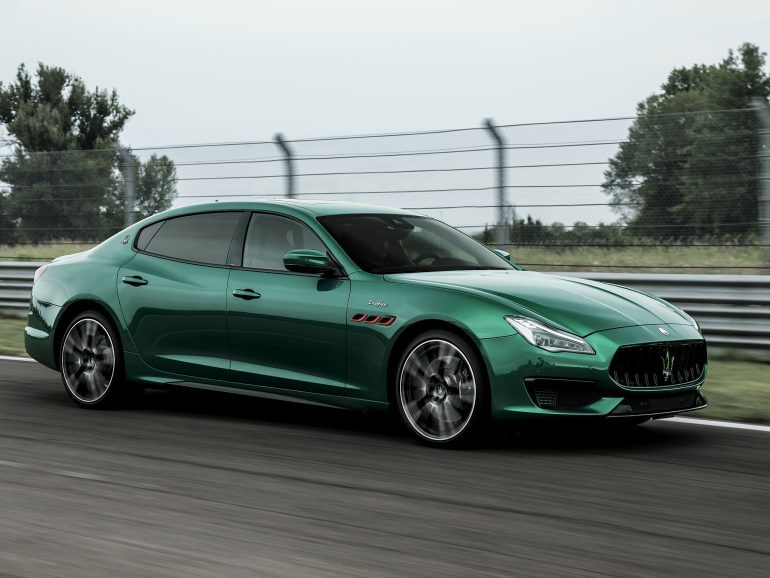
6th Generation Quattroporte Basics
Production: 2013–present
Model years: 2014–present
Assembly: Italy
Designer: Lorenzo Ramaciotti
Layout: Front-engine,RWD/AWD
Platform: Maserati M156
Engine: 3.0 L F160 twin-turbo V6, 3.8 L F154 twin-turbo V8, Diesel 3.0 L VM A630 HP turbo V6"
Trans: 8-speed ZF auto
Wheelbase: 3,171 mm (124.8 in)
Length: 5,262 mm (207.2 in)
Width: 1,948 mm (76.7 in)
Height: 1,481 mm (58.3 in)
Kerb weight: 1,860–1,925 kg
Did You Know
This generation marked the move to turbocharged powerplants for all Quattroporte models. Initially offering V6 and V8 choices, it now also has a hybrid option.
Maserati introduced its Q4 intelligent all-wheel-drive system on the Quattroporte, giving it added traction and all-weather capability.
Variants
Quattroporte
Quattroporte S
Quattroporte S (2018)
Quattroporte S Q4
Quattroporte S Q4 (2018)
Quattroporte GTS
Quattroporte Trofeo
Quattroporte Diesel
"The Maserati Quattroporte is the automotive equivalent of an Italian movie star – glamorous, flawed, and utterly captivating."
Supercars.net


